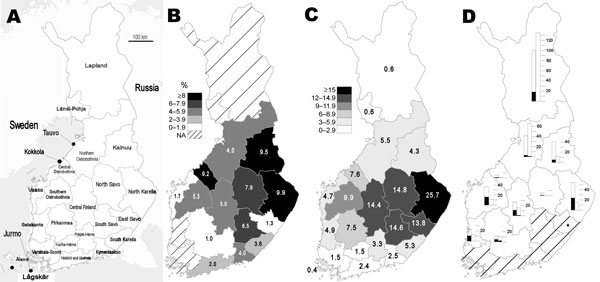Volume 14, Number 1—January 2008
THEME ISSUE
International Polar Year
Research
Sindbis Virus Infection in Resident Birds, Migratory Birds, and Humans, Finland
Figure 1

Figure 1. A) Map of Finland with the hospital district divisions. Migratory bird samples were collected from Lågskär, Tauvo, Jurmo, and Kokkola. B) Mean seroprevalence (1999–2003) of Sindbis virus (SINV) infection in human population (according to place of treatment) in the hospital districts of Finland. N/A, not available. C) Average annualized incidence (1995–2003) of SINV infection in human population (according to place of treatment) in the hospital districts of Finland. D) Prevalence of SINV hemagluttination-inhibition antibodies in resident grouse in Finland. The left bars represent the year 2003 and right bars 2004. The bars represent the total number of samples available; the black areas, the number of seropositive samples. *In 2003 in East Savo, the only sample collected was seropositive.